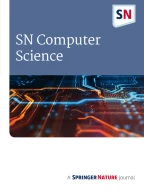Abstract
Classical–quantum transfer learning is a recent development in the field of quantum computing, which involves the modification of a pre-trained classical network and compounding it with a variational quantum circuit. This paper puts forward a quantum transfer learning-based approach for three different image classification tasks—classifying organic and recyclable from Trash, TB detection from chest X-ray images and detecting the presence of cracks from concrete crack images. The model used in this paper is a concatenation of pre-trained classical feature extractor with a quantum circuit as classifier. This paper compares the classification results obtained using various pre-trained networks such as VGG19, DenseNet169 and AlexNet, as feature extractors. From the obtained results, it is inferred that, DenseNet, Alexnet and VGG19 performs better in trash, TB and crack datasets, respectively. No model is the best for all the classification tasks, it is purely based on parameters such as dataset size, test-train split and learning rate.







Similar content being viewed by others
Explore related subjects
Discover the latest articles, news and stories from top researchers in related subjects.References
Mari A, Bromley TR, Izaac J, Schuld M, Killoran N. Transfer learning in hybrid classical-quantum neural networks. Quantum. 2020;4:340.
Killoran N, Bromley TR, Arrazola JM, Schuld M, Quesada N, Lloyd S. Continuous-variable quantum neural networks. Phys Rev Res. 2019;1(3):033–63.
Deng J, Dong W, Socher R, Li L, Li K, Fei-Fei L. ImageNet: a large-scale hierarchical image database. In: 2009 IEEE conference on computer vision and pattern recognition. 2009. p. 248–55.
Preskill J. Quantum computing in the NISQ era and beyond. Quantum. 2018;2:79.
Dorafshan S, Thomas R, Maguire M. SDNET2018: An annotated image dataset for non-contact concrete crack detection using deep convolutional neural networks. Data Brief. 2018;21:1664–8.
Jaeger S, Karargyris A, Candemir S, Folio L, Siegelman J, Callaghan F, Xue Z, Palaniappan K, Singh RK, Antani S, Thoma G, Wang Y, Lu P, McDonald CJ. Automatic Tuberculosis Screening Using Chest Radiographs. IEEE Trans Med Imaging. 2014;33:233–45.
Vo AH, Son LH, Vo MT, Le T. A novel framework for trash classification using deep transfer learning. IEEE Access. 2019;7:178631–9.
Sakr GE, Mokbel M, Darwich A, Khneisser MN, Hadi A. Comparing deep learning and support vector machines for autonomous waste sorting. In: 2016 IEEE international multidisciplinary conference on engineering technology (IMCET). 2016. p. 207–12.
Adedeji O, Wang Z. Intelligent waste classification system using deep learning convolutional neural network. Proc Manuf. 2019;35:607–12.
Pasa F, Golkov V, Pfeiffer F, Cremers D, Pfeiffer D. Efficient deep network architectures for fast chest X-ray tuberculosis screening and visualization. Sci Rep. 2019. https://doi.org/10.1038/s41598-019-42557-4.
Sharma N, Dhir R, Rani R. Crack detection in concrete using transfer learning. Adv Math Sci J. 2020;9:3895–906.
Zhang X, Rajan D, Story B. Concrete crack detection using context-aware deep semantic segmentation network. Comput Aided Civ Infrastruct Eng. 2019;34:951–71.
Kim B, Cho S. Image-based concrete crack assessment using mask and region-based convolutional neural network. Struct Control Health Monit. 2019;26:e2381.
Islam MMM, Kim J-M. Vision-based autonomous crack detection of concrete structures using a fully convolutional encoder–decoder network. Sensors. 2019. https://doi.org/10.3390/s19194251.
Liang S, Jianchun X, Xun Z. An algorithm for concrete crack extraction and identification based on machine vision. IEEE Access. 2018;6:28993–9002.
Schuld M, Sinayskiy I, Petruccione F. An introduction to quantum machine learning. Contemp Phys. 2015;56:172–85.
Oh S, Choi J, Kim J. A tutorial on quantum convolutional neural networks (QCNN). 2020. http://arxiv.org/abs/2009.09423 [quant-ph].
Bergholm V, et al. PennyLane: automatic differentiation of hybrid quantum-classical computations. 2018. p. 1–12.
Author information
Authors and Affiliations
Corresponding author
Ethics declarations
Conflict of Interest
The authors declare that they have no conflict of interest.
Additional information
Publisher's Note
Springer Nature remains neutral with regard to jurisdictional claims in published maps and institutional affiliations.
This article is part of the topical collection “Intelligent Systems” guest edited by Geetha Ganesan, Lalit Garg, Renu Dhir, Vijay Kumar and Manik Sharma.
Rights and permissions
About this article
Cite this article
Mogalapalli, H., Abburi, M., Nithya, B. et al. Classical–Quantum Transfer Learning for Image Classification. SN COMPUT. SCI. 3, 20 (2022). https://doi.org/10.1007/s42979-021-00888-y
Received:
Accepted:
Published:
DOI: https://doi.org/10.1007/s42979-021-00888-y


